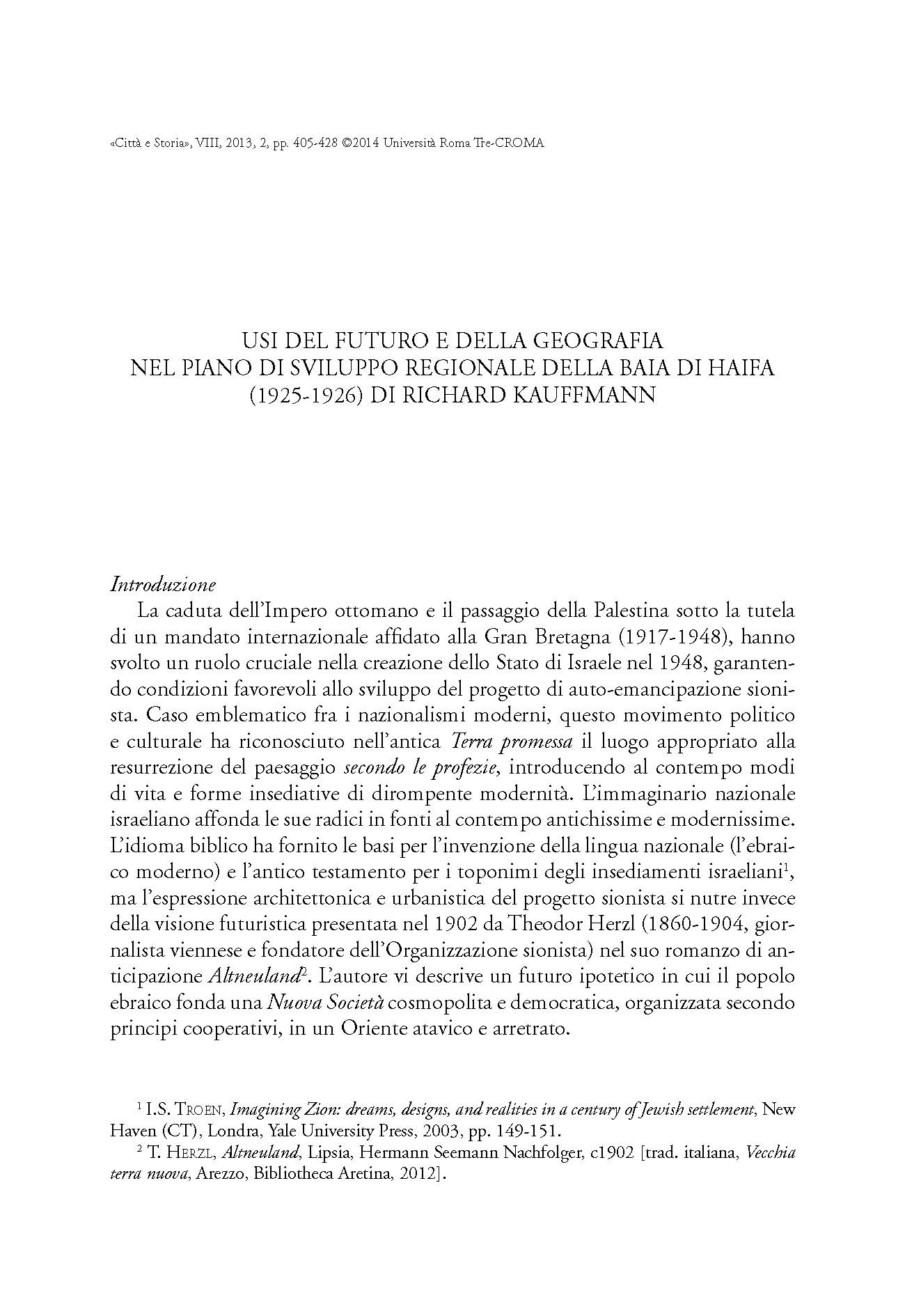Usi del futuro e della geografia nel Piano di sviluppo regionale della baia di Haifa (1925-1926) di Richard Kauffmann
6,00 €
The fall of the Ottoman Empire and the instauration of the British Mandate for Palestine (1917-1948) represented a key-moment for the development of the Zionist project. During these three decades, the Jewish colonization of Palestine laid the demographic, economical, institutional, territorial and cultural foundations for the creation of the State of Israel (1948). Within this frame, the architecture and urban design of Jewish settlements contributed to reorganize the country’s functional and symbolic asset. To be sure, the Zionist urban imagination did not aim so much to resurrect some mythical and idealized pas, but rather to fulfill drastically modern utopian visions, openly contrasting the forms of existing Arab cities and villages. The case of the Haifa Bay regional development scheme prepared by the architect Richard Kauffmann (1887-1958) is emblematic. Through the interpretation and enhancement of the place’s geographic features, Kauffmann contributed to root the Zionist dream in the physical Palestinian landscape, adding critical elements to understand the formation of this national identity, and raising topical urban design issues.
The fall of the Ottoman Empire and the instauration of the British Mandate for Palestine (1917-1948) represented a key-moment for the development of the Zionist project. During these three decades, the Jewish colonization of Palestine laid the demographic, economical, institutional, territorial and cultural foundations for the creation of the State of Israel (1948). Within this frame, the architecture and urban design of Jewish settlements contributed to reorganize the country’s functional and symbolic asset. To be sure, the Zionist urban imagination did not aim so much to resurrect some mythical and idealized pas, but rather to fulfill drastically modern utopian visions, openly contrasting the forms of existing Arab cities and villages. The case of the Haifa Bay regional development scheme prepared by the architect Richard Kauffmann (1887-1958) is emblematic. Through the interpretation and enhancement of the place’s geographic features, Kauffmann contributed to root the Zionist dream in the physical Palestinian landscape, adding critical elements to understand the formation of this national identity, and raising topical urban design issues.

